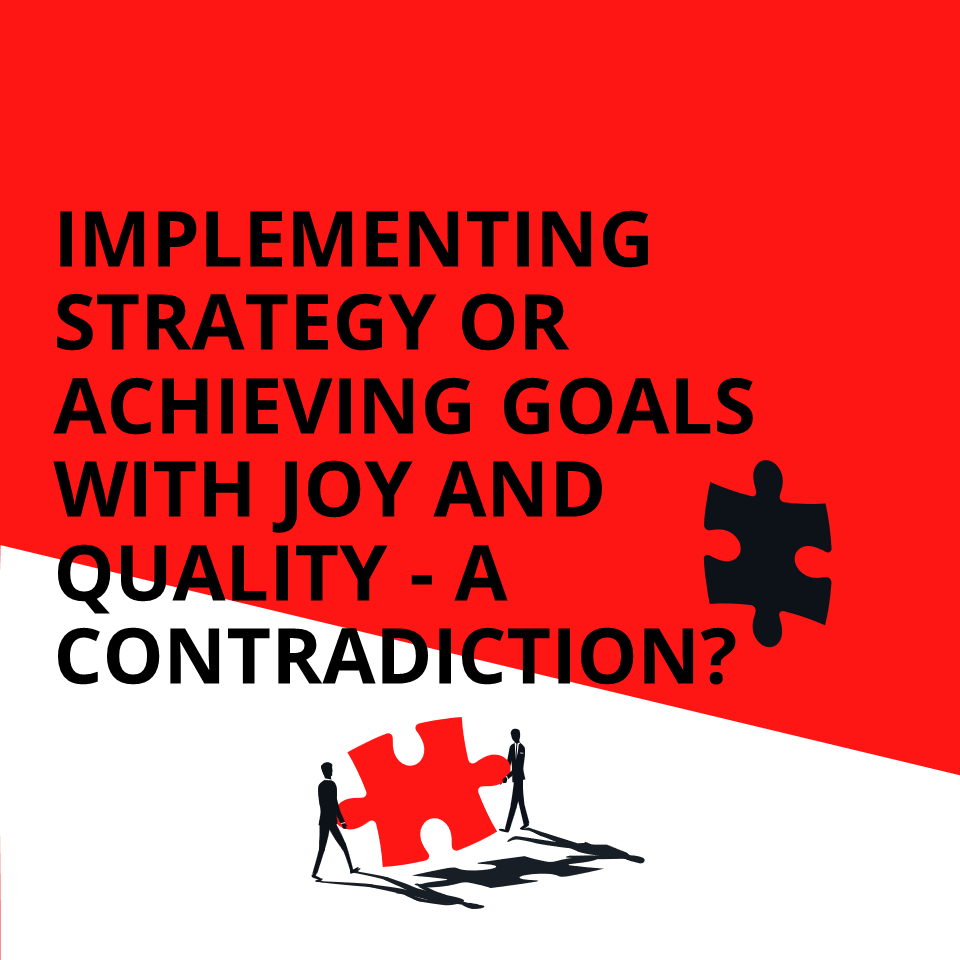Good performance management is a topic that constantly moves managers: How can we really achieve what we want to achieve together with our employees and using our resources? Far too often, people try to answer this question with the usual incentive systems, requirements and expectations. But have we understood what drives people to perform?

An excursion into health research is helpful here. Aaron Antonovsky (Israeli-American sociologist, founder of salutogenesis) sought explanations for a person’s health. He focused on the relationship between health and disease. He expressed it most aptly in a metaphor:
“People swim in a river full of dangers, whirlpools, bends and rapids. The physician, Antonovsky explains, can try to pull the drowning person out of the current with his pathogenetically oriented medicine. In his understanding, however, there is more to it than that: it is a matter of making the person a good swimmer. So what helps him to master whirlpools and rapids without medical help?”
The best fundamental dimensions for engagement & performance can be derived from his work: So what does it take for people to sustainably perform well?
Translated with www.DeepL.com/Translator (free version)
01 Meaningfulness & Meaningfulness
Meaningfulness is the feeling that something is worth putting energy into. When the meaning and purpose of an endeavor (role, team, project) is clearly understood, people are usually more willing to get involved.
02 Comprehensibility
The second prerequisite for high performance is that people understand what really matters and what exactly is to be achieved.
Can all employees explain what the priorities of the company and their teams are? Can they themselves see how their daily work contributes to the long-term goals? Whether by means of the Japanese philosophy of or the , it is possible even in large organizations to generate this understanding, in which people are included and feel part of the whole.
If they then feel empowered in their role, that is, if they can be effective in the organization through influence, autonomy and decision-making responsibility, then the conditions for outstanding performance are also created at this level.
03 Manageability
The availability of the skills and resources needed to successfully complete one’s tasks is the third pillar for high performance. People like to ask themselves the following questions: Can I constantly develop my skills in line with the requirements? Do my tasks challenge me enough so that I can grow with them? Do they still remain accessible and manageable for me? Can I use these skills and my strengths to learn and succeed? Do I receive regular feedback from managers, stakeholders, and colleagues? Is there someone who supports me, as a coach or mentor?
If we believe that meaningfulness, understandability, and manageability must be present at the individual and team levels to achieve high performance, what do we need to do to create such a high-performance environment?
Let us know what you think about this topic and leave us a short comment – we and the other readers are happy to get into the exchange!
And if this post is valuable to you, then simply share it via the selection below.


